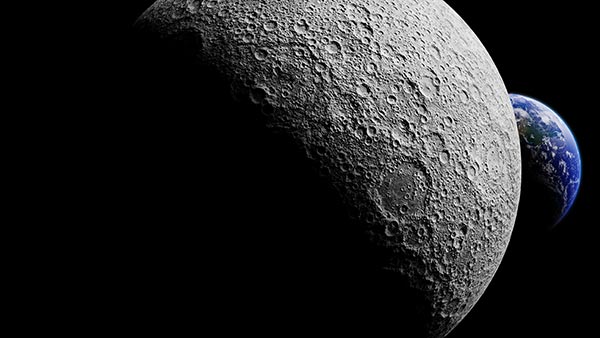
A study published Monday in the journal Nature Astronomy has confirmed the existence of water on the sunlit surface of the moon. This discovery indicates that water may be distributed throughout the lunar surface and not limited to the deep, shadowed craters in the lunar south pole.
Using the National Aeronautics and Space Administration (NASA) telescope aboard the Stratospheric Observatory for Infrared Astronomy (SOFIA) aircraft, researchers led by Casey Honniball of NASA’s Goddard Space Flight Center detected water molecules in the Clavius crater, one of the largest craters visible from Earth.
Definitive evidence of water on the moon
According to Honniball, scientists have known about the presence of water on the moon for some time now. Orbital and impactor missions over the past 20 years have confirmed the presence of water ice in the large craters around the poles. But the average temperatures in these craters are around -400 degrees in part because sunlight never reaches most of these areas. Because of the frigid conditions, scientists are eager to find some other spot to explore and mine for resources.
In a 2009 study, scientists discovered molecular hydrogen and oxygen in the sunny regions of the moon. Due to technological limitations, however, they weren’t able to ascertain whether these molecules were those of water or hydroxyl, a close chemical relative of water commonly found in drain cleaners.
“[We] didn’t know how much, if any, was actually water molecules – like we drink every day – or something more like drain cleaner,” said Honniball.
SOFIA, a modified Boeing 747 jetliner, offered a new way of observing the moon. It flies high in the sky, above 99 percent of the water vapor in the Earth’s atmosphere, allowing the telescope aboard it to get a clearer view of outer space.
Through this telescope, Honniball and her colleagues were able to detect infrared signatures unique to water at a wavelength of around six microns. These emissions were seen in the sunlit parts of Clavius near the south pole but not near the equator where temperatures are warmer. (Related: The Moon has plenty of water – frozen below the surface.)
Water on the moon can boost space exploration
To be clear, what the researchers found was not a lake or even a puddle. The total amount of water in Clavius is estimated to be around 100 to 400 parts per million, which is equivalent to a 12-ounce bottle of water within a cubic meter of soil. That is 100 times less than the water in the Sahara desert.
A good amount of the water, according to the researchers, is likely stored within tiny impact glasses formed out of the high heat produced by micrometeorite blasts. It’s also possible that the water is hidden between grains of lunar soil. Stored this way, water is shielded from the harsh lunar environment.
“Without a thick atmosphere, water on the sunlit lunar surface should just be lost to space,” said Honniball.
As to how the water got to the moon’s surface, the researchers posit that micrometeorites that pelted the moon must have had carried small amounts of water and deposited these upon impact. Another possibility is that hydrogen brought by the solar wind likely interacted with the oxygen-bearing minerals on the lunar surface and formed hydroxyl. Radiation from micrometeorites impacts could have had transformed the hydroxyl into water.
Whatever the case, the presence of water on the accessible areas of the moon will greatly benefit space exploration. Astronauts won’t have to bring huge amounts of water aboard their spacecraft, so there’d be more room for equipment, according to Jacob Bleacher, the chief exploration scientist at NASA’s Human Exploration and Operations Mission Directorate. (Related: Free fuel for satellites: Large asteroids close to Earth could be mined for water, suggest researchers.)
While the water found by Honniball’s team is arguably insignificant, another study, which was also published Monday in Nature Astronomy, found many smaller and shallower craters in the lunar poles that may be cold enough to trap water ice and yet are easier to access than the large craters.
These micro “cold traps” add up to 15,000 square miles of the lunar surface and therefore could be a “real game-changer,” according to lead author Paul Hayne of the University of Colorado Boulder. Together with the water found on the sunlit areas of the moon, these spots suggest that water is much more spread out on the lunar surface than previously thought.
If astronauts could gain access to these pockets of water ice, they could split water molecules and isolate hydrogen and oxygen atoms. Oxygen can provide astronauts with breathable air while both atoms can be used to produce a rocket propellant. Having a steady source of water, in other words, means more trips to and around outer space.
Read more studies about water on the moon at Space.news.
Sources include:
Please contact us for more information.














